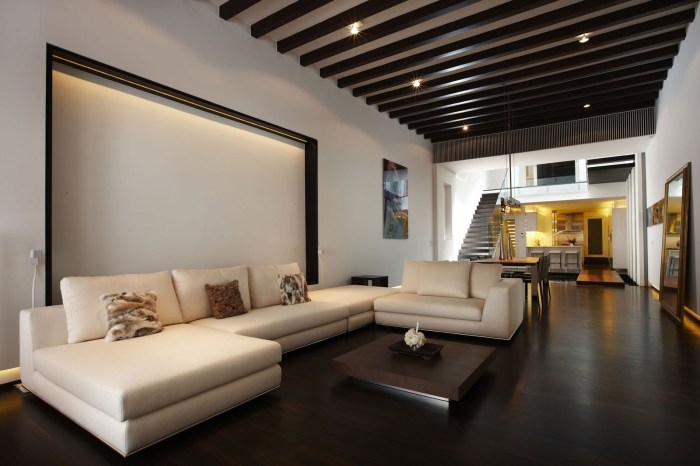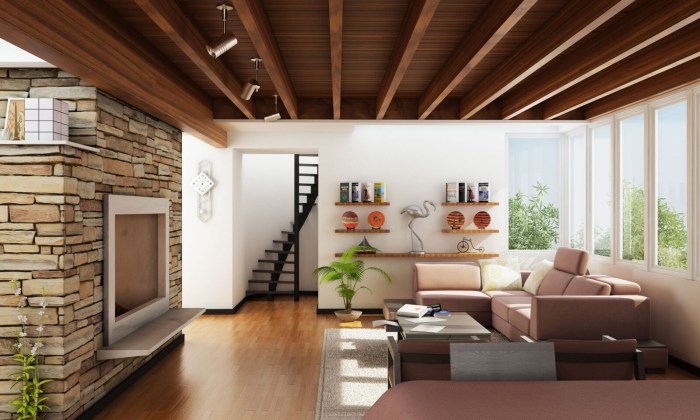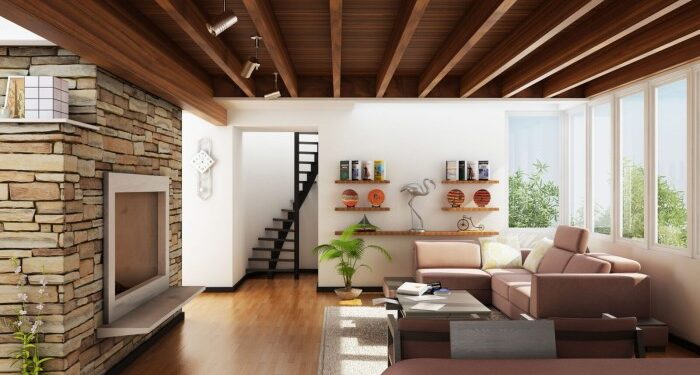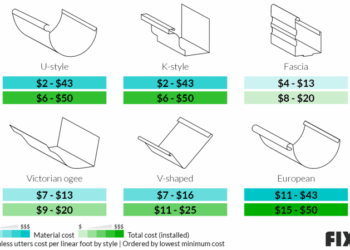Step into the realm of interior architecture where creativity and functionality converge to shape captivating spaces. From the intricate details of spatial organization to the impactful use of materials, embark on a journey that delves deep into the essence of interior design.
Uncover the nuances of interior architecture as we unravel the core elements and principles that define this dynamic field.
Introduction to Interior Architecture
Interior architecture is a specialized field within the design industry that focuses on creating functional and aesthetically pleasing interior spaces. It involves the design and renovation of indoor environments to enhance the quality of life and experience for the occupants.
Interior architects work closely with clients to understand their needs, preferences, and budget constraints to deliver innovative and practical solutions.
Difference between Interior Design and Interior Architecture
Interior design primarily deals with the decoration and furnishing of interior spaces, focusing on aesthetics, colors, textures, and furniture selection. On the other hand, interior architecture goes beyond decoration to address the structural and spatial design elements of a space.
Interior architects consider factors such as building codes, safety regulations, lighting, acoustics, and sustainability when designing interiors.
Role of Interior Architects
Interior architects play a crucial role in shaping interior spaces by combining their technical knowledge with artistic sensibilities. They collaborate with other professionals, such as engineers, contractors, and decorators, to ensure that the design vision is executed effectively. From conceptualizing layouts to selecting materials and finishes, interior architects oversee every aspect of the interior design process to create cohesive and functional spaces that meet the needs of the clients.
Elements of Interior Architecture

Interior architecture involves various key elements that play a crucial role in shaping the design and functionality of a space. Let's delve into some of these essential components.
Spatial Organization
Spatial organization refers to the layout and arrangement of different areas within a space to optimize functionality and flow. It involves considerations such as room proportions, circulation paths, and the relationship between various spaces. Effective spatial organization can enhance usability and create a harmonious environment.
Circulation
Circulation in interior architecture focuses on the movement of people through a space. It includes factors like the arrangement of furniture, doors, and corridors to ensure smooth navigation and accessibility. Thoughtful circulation design can improve the overall user experience and maximize the efficiency of a space.
Lighting Design
Lighting design is a critical element that influences the mood, ambiance, and functionality of a space. It involves selecting the right lighting fixtures, placement, and intensity to create the desired atmosphere. Proper lighting design can highlight architectural features, enhance visual comfort, and transform the perception of a space.
Materials, Textures, and Colors
Materials, textures, and colors play a significant role in interior architecture by adding depth, character, and visual interest to a space. The choice of materials can impact the aesthetic appeal, durability, and tactile experience of a design. Texture and color selection can evoke emotions, define the style, and create a cohesive design scheme.
Furniture and Fixtures
Furniture and fixtures are essential components that contribute to the functionality, comfort, and aesthetic of an interior space. The selection of furniture pieces, such as seating, tables, and storage units, can define the purpose of different areas and enhance the overall design concept.
Fixtures like lighting, plumbing, and hardware also play a crucial role in complementing the architectural design and providing essential functions.
Principles of Interior Architecture
Interior architecture relies on fundamental principles that guide the design process to create functional and aesthetically pleasing spaces. Let's delve into the key principles that govern interior architecture.
Balance, Harmony, Rhythm, and Emphasis
In interior architecture, balance refers to the distribution of visual weight in a space to create a sense of equilibrium. Harmony involves the coordination of elements to achieve a cohesive and unified design. Rhythm establishes a visual flow that guides the eye through a space, while emphasis highlights key focal points to draw attention.
Proportion and Scale
Proportion and scale are essential considerations in interior architecture. Proportion deals with the relative size and scale of elements within a space, ensuring that they are visually pleasing and well-balanced. Scale, on the other hand, relates to the size of objects in relation to the space they occupy, helping to establish a sense of proportion and hierarchy.
Unity and Variety
Creating a balance between unity and variety is crucial in interior architecture. Unity ensures that all elements in a space work together harmoniously to create a cohesive design. At the same time, variety adds interest and diversity, preventing a space from becoming monotonous.
The interplay between unity and variety results in dynamic and engaging interior spaces.
Historical Influences on Interior Architecture
Interior architecture has been greatly influenced by various historical movements and styles that have shaped the way spaces are designed and decorated. From the ornate details of Art Deco to the minimalist approach of Bauhaus, these influences continue to impact modern interior architecture.
Cultural and social factors also play a significant role in determining design trends, reflecting the values and preferences of different societies throughout history.
Evolution of Interior Architecture
The evolution of interior architecture can be traced through different architectural movements such as Baroque, Rococo, Neoclassical, Art Nouveau, and Modernism. Each of these movements brought unique elements and design principles that have contributed to the overall development of interior architecture over the centuries.
Influence of Art Deco
Art Deco, with its geometric patterns, luxurious materials, and bold colors, continues to influence interior architecture today. The style, popular in the 1920s and 1930s, showcases a sense of glamour and sophistication that can be seen in contemporary spaces through the use of mirrored surfaces, sleek furniture, and intricate detailing.
Impact of Bauhaus
The Bauhaus movement, founded in Germany in the early 20th century, emphasized functionality, simplicity, and the use of industrial materials. This approach to design has had a lasting impact on modern interior architecture, with its focus on clean lines, minimal ornamentation, and the integration of art and technology.
Role of Minimalism
Minimalism, characterized by simplicity, neutral colors, and a focus on space and light, has become a dominant trend in interior architecture. This style, influenced by Japanese design principles, promotes a sense of calm and order in spaces, emphasizing the importance of decluttering and creating a harmonious environment.
Cultural and Social Factors in Design Trends
Cultural and social factors such as globalization, sustainability, and changing lifestyles have a significant impact on interior architectural design trends. These influences shape the way spaces are designed to meet the needs and preferences of diverse populations, reflecting the values and aspirations of society at large.
Technology and Innovation in Interior Architecture
Technology and innovation play a crucial role in shaping the field of interior architecture, providing designers with advanced tools and techniques to enhance their projects. From 3D modeling and virtual reality (VR) to smart home systems, digital advancements have revolutionized the way interior spaces are conceptualized, designed, and experienced.
Use of Advanced Technologies
Advanced technologies such as 3D modeling and VR have become essential tools for interior architects to visualize and communicate their design ideas effectively. These tools allow designers to create realistic renderings, walkthroughs, and virtual tours of spaces before they are built, enabling clients to experience the design in a more immersive way.
Sustainable Design Practices
Sustainable design practices have gained momentum in the interior architecture industry, with a focus on reducing environmental impact and promoting healthier living spaces. Integrating sustainable materials, energy-efficient systems, and green building strategies into interior architectural projects not only benefits the environment but also enhances the overall quality of the design.
Digital Tools Revolutionizing the Industry
Digital tools have transformed the interior architecture industry by streamlining the design process, improving collaboration among stakeholders, and increasing efficiency in project management. From project management software to augmented reality (AR) applications, these tools enable designers to work more effectively, creatively, and sustainably, ultimately leading to innovative and impactful interior design solutions.
Conclusive Thoughts

As we draw the curtains on our exploration of interior architecture, the tapestry of design elements and historical influences paint a vivid picture of this evolving discipline. Let the symphony of technology and innovation resonate as we envision the future landscape of interior architectural design.
FAQs
What sets interior architecture apart from interior design?
Interior architecture focuses on the structural elements of a space, such as layout and infrastructure, while interior design is more concerned with aesthetics and decor.
How do materials and textures influence interior architectural design?
Materials and textures play a crucial role in adding depth and character to interior spaces, enhancing the overall visual appeal and atmosphere.
What historical styles have influenced modern interior architecture?
Art Deco, Bauhaus, and Minimalism are among the historical styles that have left a lasting impact on modern interior architecture, shaping design trends and aesthetics.












